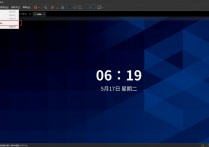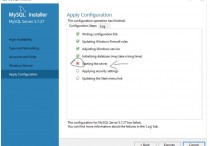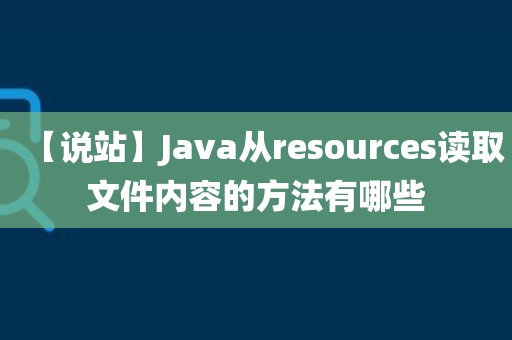Java与MySQL数据库分库分表实践详解

在大型应用中,为了提高数据库性能和可扩展性,常常会采用分库分表的策略。本文将详细介绍如何使用Java语言搭配MySQL数据库进行分库分表,并提供相关的代码实例。
1. 环境准备
确保项目中引入了数据库连接池,例如使用Druid。在pom.xml中添加以下依赖:
<dependency>
<groupId>com.alibaba</groupId>
<artifactId>druid</artifactId>
<version>1.2.6</version>
</dependency>
2. 分库分表策略选择
常见的分库分表策略有垂直切分和水平切分。垂直切分是将数据库按照业务模块划分,每个库负责一个模块;水平切分是将同一表的数据按照一定规则划分到不同的表中。本文以水平切分为例进行演示。
3. 数据库配置
在application.properties(或application.yml)中配置多个数据源:
# 数据源1
spring.datasource.ds1.url=jdbc:mysql://localhost:3306/db1
spring.datasource.ds1.username=root
spring.datasource.ds1.password=root
# 数据源2
spring.datasource.ds2.url=jdbc:mysql://localhost:3306/db2
spring.datasource.ds2.username=root
spring.datasource.ds2.password=root
4. 配置数据源和事务管理
在配置类中配置多个数据源和事务管理:
@Configuration
public class DataSourceConfig {
@Primary
@Bean(name = "ds1DataSource")
@ConfigurationProperties(prefix = "spring.datasource.ds1")
public DataSource dataSource1() {
return DataSourceBuilder.create().build();
}
@Bean(name = "ds2DataSource")
@ConfigurationProperties(prefix = "spring.datasource.ds2")
public DataSource dataSource2() {
return DataSourceBuilder.create().build();
}
@Bean(name = "dynamicDataSource")
public DynamicDataSource dynamicDataSource(@Qualifier("ds1DataSource") DataSource ds1DataSource,
@Qualifier("ds2DataSource") DataSource ds2DataSource) {
Map<Object, Object> targetDataSources = new HashMap<>();
targetDataSources.put(DatabaseType.DS1, ds1DataSource);
targetDataSources.put(DatabaseType.DS2, ds2DataSource);
DynamicDataSource dynamicDataSource = new DynamicDataSource();
dynamicDataSource.setTargetDataSources(targetDataSources);
dynamicDataSource.setDefaultTargetDataSource(ds1DataSource);
return dynamicDataSource;
}
@Bean
public PlatformTransactionManager transactionManager(@Qualifier("dynamicDataSource") DataSource dataSource) {
return new DataSourceTransactionManager(dataSource);
}
}
5. 动态数据源切换
创建一个DynamicDataSource类,继承AbstractRoutingDataSource,用于动态切换数据源:
public class DynamicDataSource extends AbstractRoutingDataSource {
@Override
protected Object determineCurrentLookupKey() {
return DatabaseContextHolder.getDatabaseType();
}
}
6. 数据库上下文
创建一个DatabaseContextHolder类,用于保存当前线程使用的数据源:
public class DatabaseContextHolder {
private static final ThreadLocal<DatabaseType> contextHolder = new ThreadLocal<>();
public static void setDatabaseType(DatabaseType type) {
contextHolder.set(type);
}
public static DatabaseType getDatabaseType() {
return contextHolder.get();
}
public static void clearDatabaseType() {
contextHolder.remove();
}
}
7. 数据库类型枚举
创建一个DatabaseType枚举类,用于定义多数据源的标识:
public enum DatabaseType {
DS1, DS2;
}
8. 切面配置
创建一个切面类,用于在执行数据库操作前切换数据源:
@Aspect
@Component
public class DataSourceAspect {
@Before("execution(* com.example.dao.ds1..*.*(..))")
public void setDataSource1() {
DatabaseContextHolder.setDatabaseType(DatabaseType.DS1);
}
@Before("execution(* com.example.dao.ds2..*.*(..))")
public void setDataSource2() {
DatabaseContextHolder.setDatabaseType(DatabaseType.DS2);
}
@After("execution(* com.example.dao..*.*(..))")
public void restoreDataSource() {
DatabaseContextHolder.clearDatabaseType();
}
}
9. 编写DAO层代码
在DAO层中按照业务需求使用不同的数据源:
@Repository
public interface UserMapper {
@DataSource(DatabaseType.DS1)
List<User> getAllUsersFromDS1();
@DataSource(DatabaseType.DS2)
List<User> getAllUsersFromDS2();
// 其他数据操作方法
}
10. 示例代码
以Spring Boot为例,编写一个简单的Controller进行测试:
@RestController
@RequestMapping("/user")
public class UserController {
@Autowired
private UserMapper userMapper;
@GetMapping("/getAllUsersFromDS1")
public List<User> getAllUsersFromDS1() {
return userMapper.getAllUsersFromDS1();
}
@GetMapping("/getAllUsersFromDS2")
public List<User> getAllUsersFromDS2() {
return userMapper.getAllUsersFromDS2();
}
}
以上是一个基本的Java与MySQL数据库分库分表的实践,通过配置多数据源、动态切换数据源,实现了水平切分的策略。在实际应用中,可以根据业务需求和数据库规模进一步优化和拓展。希望这份详细的代码实例对你理解Java与MySQL分库分表有所帮助。
本站发布的内容若侵犯到您的权益,请邮件联系站长删除,我们将及时处理!
从您进入本站开始,已表示您已同意接受本站【免责声明】中的一切条款!
本站大部分下载资源收集于网络,不保证其完整性以及安全性,请下载后自行研究。
本站资源仅供学习和交流使用,版权归原作者所有,请勿商业运营、违法使用和传播!请在下载后24小时之内自觉删除。
若作商业用途,请购买正版,由于未及时购买和付费发生的侵权行为,使用者自行承担,概与本站无关。












